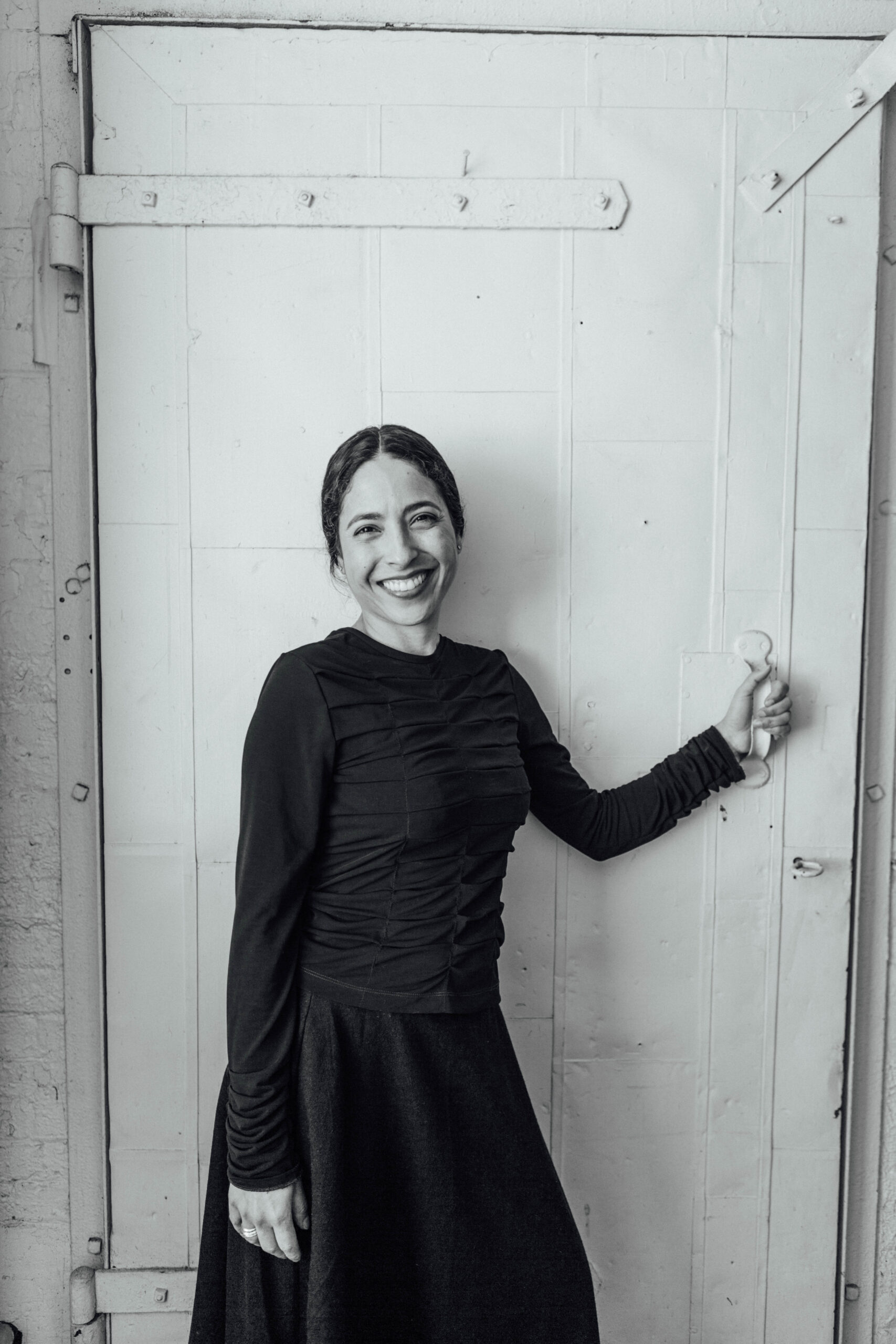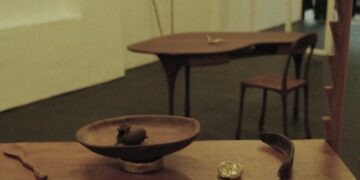For this exercise, let’s consider that a body of work activates a space and establishes relationships, perhaps even narratives, among themselves and with its audience. Each work and its potential connections within the space, combined with the individual repertoires of the artist and visitor, are already dynamic variables that interrelate freely, leading to endless experiences. When good art is open and process-based, the same methodology may apply to curatorial practices. An attempt to guide the viewer to a specific outcome is not part of good artistic practice, however. To achieve a process-based outcome, curators, artists, graphic designers, lighting designers, and art preparators collaborate on exhibitions with subtle layers of language uniquely perceived by each visitor.
ON SPACE
The space where art is placed is not neutral, even when empty. The architecture, scale, proportion, and the materials making up the wall, floor, ceiling, and furniture, as well as the history and memories of that place, provide context for establishing spatial relationships between artwork and the visitor. Spatial geometry, in conversation with the invisible lines proposed by the curatorial language, are essential aspects for the conception, assembly, and presentation of a body of visual art works. I remind the reader that lines are not necessarily straight.
“A house that has been experienced is not an inert box. Inhabited space transcends geometrical space”
Gaston Bachelard – The Poetics of Space
ON REPERTOIRE
Human subjectivities and worldviews vary according to individual and communal values, stemming from religion, education level, and experience with diverse socioeconomic and/or cultural realities, among other variables. A useful example would be to consider a group of works from the perspective of social sciences and mythological thinking, and compare this view to the evolutionary and functional perspective of anthropology. There would be no consensus. Add ideas from physics and mathematical thinking, and it becomes easy to understand that each individual enters the same space from the same point but experiences the world around them differently.
On the other hand, there is information that can offer enriching context to visitors when experiencing works of art, especially contemporary artworks, where form is inseparable from the process that created it. Context and technical specification of materials can confirm, deny, or support an understanding of materiality, influencing sensory experience. And what is the correct medium for the application of the written word?
ON CONTEXT
Understanding the conditions in which a work is created can also enhance and expand the poetic experience. Knowing whether a piece is conceived for a particular exhibition space or developed in a studio during a specific historical period, such as during years of Brazilian dictatorship, or a difficult or displaced period of the artist’s life, for instance, an artist’s years in exile, informs the visitor and can activate their imagination and perception.
But when is it truly necessary to use words in the exhibition space? Should the ideas we want to share with visitors be defined by nouns, verbs, adjectives, or by stronger ideas carried by sentences? And will this conversation ever be established between the curator and the visitor, or between the artist and the visitor, mediated by the curator? Perhaps someone else would be more suited to the task, such as a researcher in a related field, or even a family member or friend?
ON MEDIUM
Just as the artist’s ideas and emotions may be better expressed through their choice of techniques and materials, the medium for communication also influences the experience. From the choice of material and typography to font size and positioning of writing in space, all selections are curatorial decisions. Are the ideas communicated by words temporal, fleeting, or factually established? Their temporality might be an important criterion in choosing the surface on which they are presented. It can appear in a projection. Or, perhaps, on printed paper. If printed, can materials be taken home by the visitor? And on what kind of paper? Or would a QR code be more appropriate?
“Now a participant in, rather than a passive support for the art, the wall became the locus of contending ideologies; and every new development had to come equipped with an attitude toward it. Once the wall became an esthetic force, it modified anything shown on it”.
Brian O’Doherty – Inside the White Cube
The visual arts find limits both in form and in presentation. Similarly, words do not resolve themselves. We visit art exhibitions in the hopes of encountering creativity and the intangible. The strength of using the written word seems to be in supporting and expanding the search for this experience.
Lu Solano is an independent curator based in Brooklyn, New York. Her projects focus on the intersection between art, science and language in contemporary environments. Solano is particularly interested in developing art exhibitions that reconfigure physical and spatial relationships with the viewer. She brings a unique perspective to her curatorial platform after working in the field of Computer and Biological Sciences, for which she holds undergraduate and graduate degrees. Lu Solano has been collaborating with international artists in residency programs such as Residency Unlimited, School of Visual Arts, NARS, The Clemente and Ybytu. Solano is a co-founder of Art in Brackets, an art consultancy and advisory firm.
To know more about Lu: @lusolano_
images: Claudia Solano









